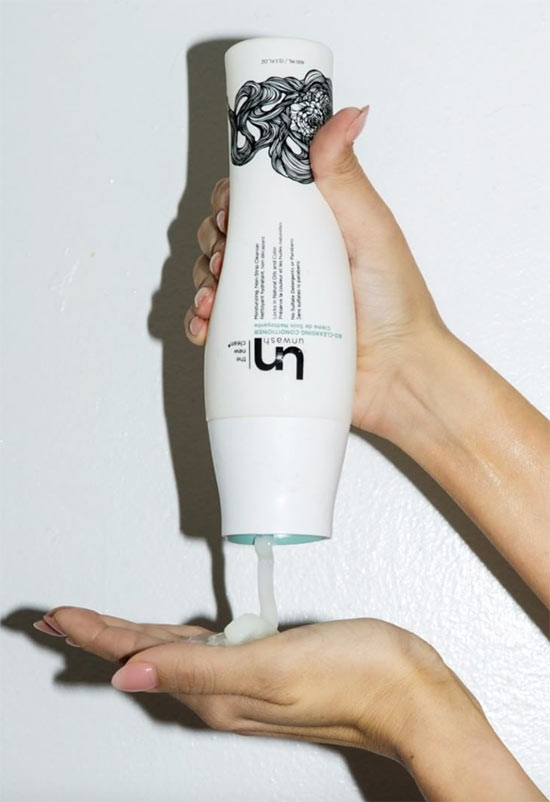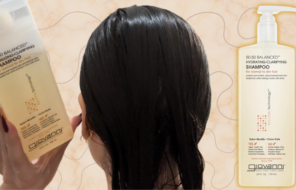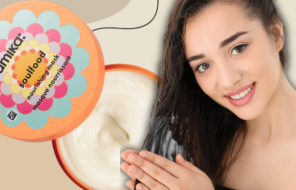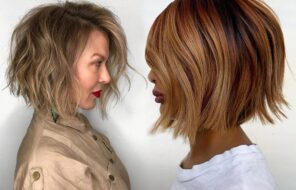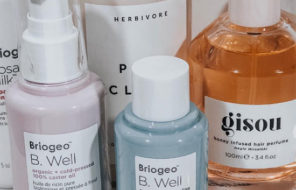There are pros and cons of skipping traditional shampoo to wash hair, of course, but many people have found that options like the no poo method and co-washing are actually more practical and beneficial. The method was originally pressed forward by natural haired African American women and quickly picked up by other thicker curly-haired people as well because – it worked! Today, we’ll go into details about what the no poo method or co-washing hair is all about, who it is perfect for, its pros and cons, and how to co-wash hair properly.
In this article:
- What Is Co-Washing?
- Hair Types That Benefit from Co-Washing
- Pros & Cons of Co-Washing Hair
- Things to Consider Before Going for the No-Poo Method
- How to Switch to the No Poo Method?
- How to Try Co-Washing Hair?
What Is Co-Washing Hair or the No-Poo Method About?
Short for conditioning washing, a.k.a. conditioner-only washing, co-washing hair is the process of cleansing your hair without traditional shampoo, but rather using cleansing conditioners. Co-washing hair allows for hair to be cleaned without the consistent stripping of natural oils that can cause issues for your hair care.
Co-washing works because of small amounts of cationic surfactants, or detergents that are included in the formulas to pick up and remove dirt particles from your hair. Your hair will not feel as clean as with an ordinary shampoo, but it will still be cleaner than what you started out with. Since you don’t use an oil-stripping shampoo, your hair will be shinier and softer.
Co-washing hair and no-poo shampooing are interchangeable terms for the same no-shampoo conditioner washing, and in both cases you either use specially formulated cream cleansers, i.e. cleansing conditioners to wash your hair or DIY products.
Quite similar to the co-washing method, the no-poo method suggests cleansing hair with a gentle alternative to your ordinary shampoo, such as store-bought no-poo shampoos, which are the same cleansing conditioners used in co-washing, or at-home products, like apple cider vinegar or baking soda. The idea is the same as with co-wash shampoos – cleansing your hair without stripping it of its natural oils.
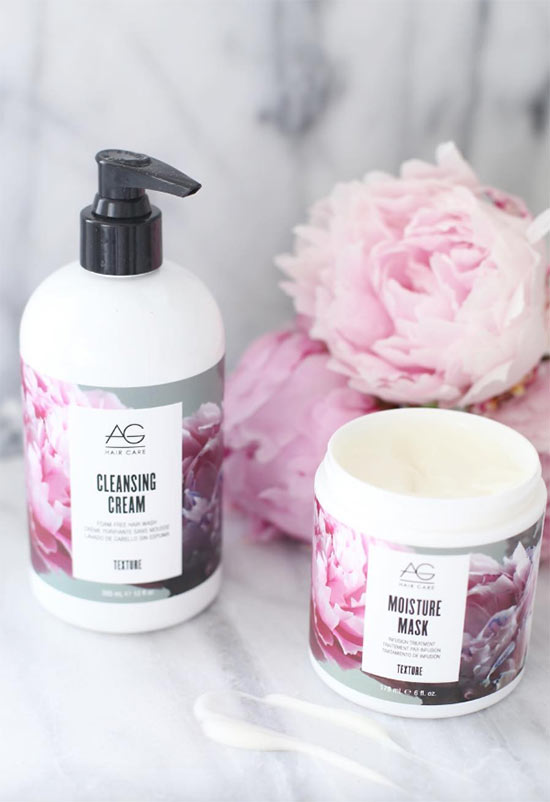
Hair Types That Benefit from Co-Washing and the No-Poo Method
Wavy, curly, coiled, kinky and tightly coiled hair types can all benefit from co-washing and other non-shampoo options. For these hair types, frequent shampooing can dry out hair and even increase tangles and single strand knots.
If you are aware of the hair typing system, any hair type from 3A to 4C can really benefit from occasionally switching in a no-poo method or incorporating a good cleansing conditioner over the traditional shampoo and conditioner. This method is particularly beneficial for African-American hair types, both natural and relaxed.
Shampooing too often is drying and stressful for hair. Co-washing or water washing between regular washes is a more ideal way to care for hair. It is nourishing and protective, and even allows for easier detangling prior to washing.
Pros & Cons of Co-Washing Hair and the No-Poo Method
Everything has pros and cons, and it’s best to know them all so you can make an informed decision. The pros and cons of foregoing shampoo and using no-poo cleansing conditioners are not really going to vary person to person.
Pros:
- Co-washing and using the no-poo method will help you detangle your hair saving you from breakage, tangles and knots.
- You can utilize your natural oils, which are best for you scalp and hair.
- Less exposure to chemicals from shampoo means less exposure to chemicals for yourself and the environment.
- Co-washing makes your hair clean, but not stripped squeaky-clean, which makes it easier for your hair to hold a style.
- Co-washing is less time-consuming, since instead of using two hair products – a shampoo and a conditioner, you just use one and save steps!
- Less manipulation because you don’t have to fight your hair with additional products to re-moisturize your hair after shampooing it.
- Cleansing conditioners are perfect for color-treated hair, as they don’t rinse out the color like normal shampoos, but rather keep it vibrant.
- Less frizz!
Cons:
- Co-washing is not a great option for thin hair, as it can end up looking greasy and limp.
- The no-poo method is not great for thick hair, unless you have a good technique, and work section by section and make certain to rinse each section clean, which can be time consuming.
- It can limit hair growth, if done improperly, and your hair will not be rinsed well.
- The no-poo method doesn’t leave your hair with the same fresh, nice smell as you get from regular shampooing.
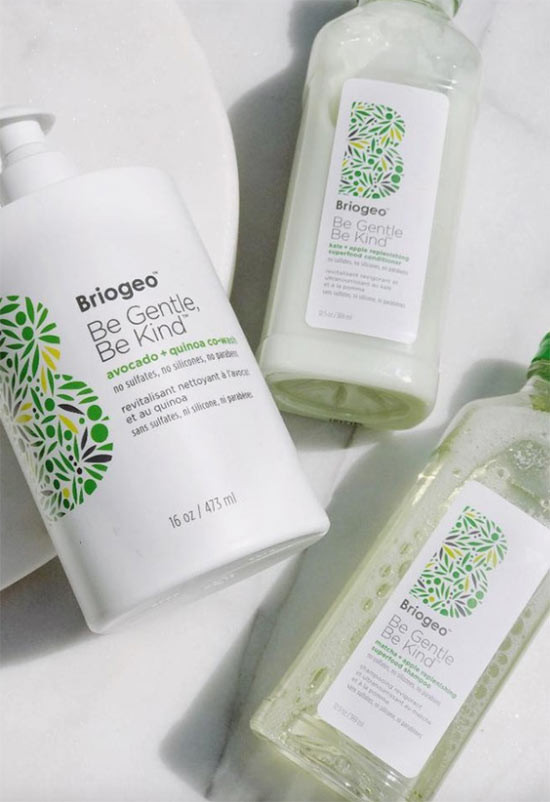
Things to Consider Before Going for the No-Poo Method
- Your hair type is one of the most important factors about choosing to go the no-poo route. This is not an ideal method for fine or thin hair or very straight hair. Everything that curly-haired people love about the no-poo method causes issues for those without the same type of hair. Thin, fine, straight hair will look oily or greasy, lack volume and movement and won’t receive any real benefits from co-washing if not done specifically for their hair type. In these cases, replacing one or two shampoos with co-washing could work well but you have to test it out and see.
- Your lifestyle is another thing to consider. If your hair is dry because of your work environment, co-washing hair can help you protect it, but if you are not, co-washing may cause unwanted build-up. The biggest draw for co-washing is that it allows for hair to be clean and moisturized in one step rather than stripping everything away along with the dirt with shampoo and trying to replace the moisture and oils later with conditioner.
- How you want to approach or create your no-poo method means addressing your needs and comfort level with the process. Not everyone is comfortable with the thought of washing with oil or just water. What are you comfortable with? What do you have access to? Can you make it yourself? Are you trying to protect your hair color?
- Longevity and schedule is also a huge matter. How many shampoos are you looking to replace? How often do you want to cleanse your hair? Will you still use shampoo to clarify your hair? How often and when?
How to Switch to the No Poo Method?
Switching to the no poo method is largely about results, and personal preference. What works for some definitely will not work for others when it comes to your hair. Address your needs and work out a plan, but remember that it will be a much different process than your normal shampooing.
Here are a few things to remember:
No Suds
The foaming, bubbling action we are all used to is created by a chemical – none of the following options will sud up. This may seem like it isn’t a big deal, but the feeling is different, you should be prepared for that.
Because hair washing leads to expectations of foam and suds and commercial style swirling of your fingertips over your scalp, it can feel as though you aren’t cleaning as well as normal.
The no poo method is to thoroughly wet your hair, then generously apply your cleansing method preference from the roots and scalp and then massage your scalp (don’t swirl), running the product through to the ends of your hair as needed with your fingers. Rinse the product out thoroughly and you’re good to go!
Your Chosen Method
Now that you know you want to ditch the shampoo, you should be ready to incorporate the type of wash ingredient you will use. Here are a few popular options:
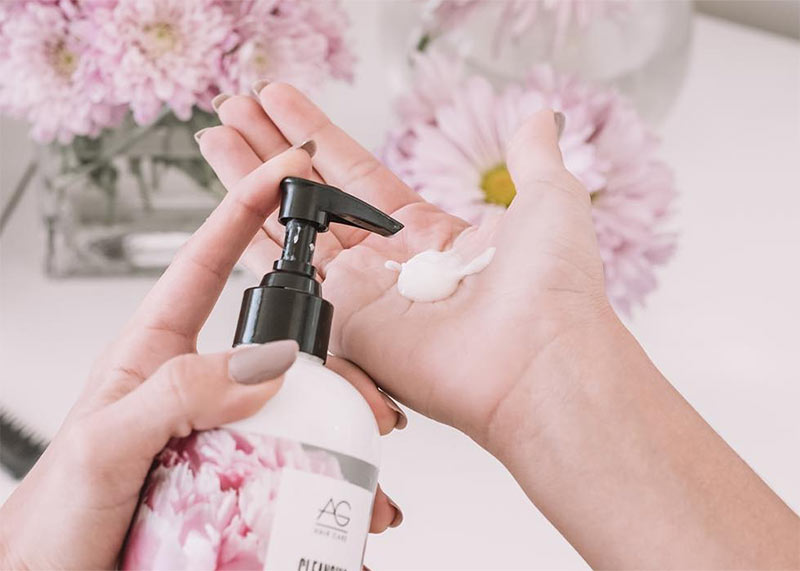
Cleansing Conditioners or No-Poo Shampoos
Cleansing conditioners are conditioners with a mild cleaning agent included to prevent the dreaded product build-up that most people worry about when considering co-washing. There are plenty out there to try, some with more cleansing properties than others, but cleansing conditioners can be used between shampoos for an optimal hair care routine.
Water Washing
Water washing is a surprisingly effective no-poo method if your hair is not too oily, and you are willing to detangle with just water. For this, warm water is used to open the cuticles, while massaging the scalp and rubbing the natural oils down the length of your hair. This will cleanse it and moisturize your hair. For the best effect, do the final rinse on your hair with cool water to close the hair cuticles and keep your hair shiny.
Rice Water Rinse
Fermented rice water is a good co-wash cleanser that is known to remove excess scalp oil, add volume and refresh the shine in hair. Fermented rice water can be made at home simply by putting rice in water and allowing it to sit in a cool dark place for a certain amount of time, usually a few days.
After that, you drain the water off and save it, and that is what you use to cleanse your hair. Rice water is well known for helping hair grow and stay smooth, soft and manageable.
Rye Flour Wash
Rye flour wash is used in then no-poo method because it has less gluten so the resulting wash you create won’t be “glue like,” but rice flour and chickpea flour will also work well.
Simply mix a few tablespoons of your choice of flour with lukewarm water to create a runny mix. Give it a few minutes so that optimal levels of vitamins and minerals can be released in the water, and then it is ready to be used.
If you leave it for several hours, it will turn into a hair masque but for the no poo method, about 10-15 minutes will do for an ideal rinse.
BS-ACV (Baking soda and Apple Cider Vinegar)
BS-ACV is one of the more surprising concoctions, most notably because no one would expect apple cider vinegar to be a good conditioner for hair, but it is! Baking soda is the cleansing element, and vinegar is the moisturizing conditioner.
One part baking soda with four parts water is mixed together and applied to wet (or dry) hair and massaged at the roots to cleanse the hair. After rinsing out the baking soda, mix one part apple cider vinegar with four parts water and pour it over your hair, then rinse out.
Your hair will be clean, shiny, moisturized and no, it won’t smell like the apple cider vinegar.
Oil Washing
Oil washing uses the properties of certain oils to help cleanse your scalp and hair while moisturizing and sealing the cuticle. There are a few oils to choose from, some of the most popular being coconut oil for hair, olive oil, grapeseed oil and sunflower oil.
Oil washing has benefits of making detangling much easier and giving hair a healthy boost of shine. For those who choose olive oil for example, this oil has antimicrobial and antibacterial benefits as well – it really all depends on which oil you choose and why.
Start out by water washing and then add a good amount of oil to your hair to massage your scalp and rinse down your hair. Warm water also makes it easier to rinse the oil from your hair.
Your Hair Type
Curlier hair is more fragile than most people think. The bends in the hair follicle can make be weak points, and the ends can be drier because it is more difficult for the natural oils that protect hair to reach from root to tip.
Another problem for people with curly hair is tangles and the dreaded single strand knots. These can actually be exacerbated by certain co-washing methods, and the best way to know is to try a few things out.
What Does Your Hair Need?
Does your hair need more protein? Does it need less manipulation? Are you prone to tangles or frizziness? What features of your current shampoo work well for you and what doesn’t? Ask yourself these questions and see what works best for you and adjust your washing method to address your hair issues and your washing process.
How to Try Co-Washing Hair?
When you’re ready to try co-washing hair, the process doesn’t have to be difficult! After you answer the questions for yourself like what your hair needs and how best to make sure your hair receives it, start to set it up.
Make sure you know what you are looking for in terms of changes in your hair and pay attention to your results. If your hair is weak and limp, more protein is likely in order. Is your hair dry and brittle? Look for the best ways to lock in moisture. Prone to tangles? Try an option that makes detangling easier by providing lots of slip.
Regardless, follow these steps first:
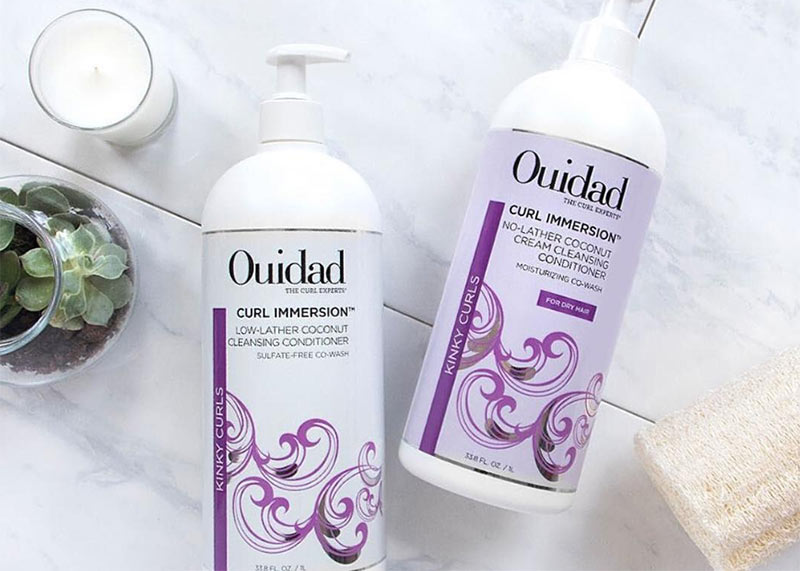
- Thoroughly wet your hair. Wet hair distributes your choice of cleansing conditioner more evenly and helps loosen the dirt and residue in your hair.
- Apply your choice of co-wash shampoo. If your hair is thick, it is best to add the no-poo shampoo in sections.
- Detangle your hair with the slip from the added product to keep hair from stretching or breaking.
- Massage your scalp and distribute the product throughout your hair.
- Rinse your hair clean.
- Monitor your strands – every once (every 2-4 weeks) in a while use a sulfate-free, clarifying shampoo to prevent build-up as needed.
Photos via @unwash, Instagram

